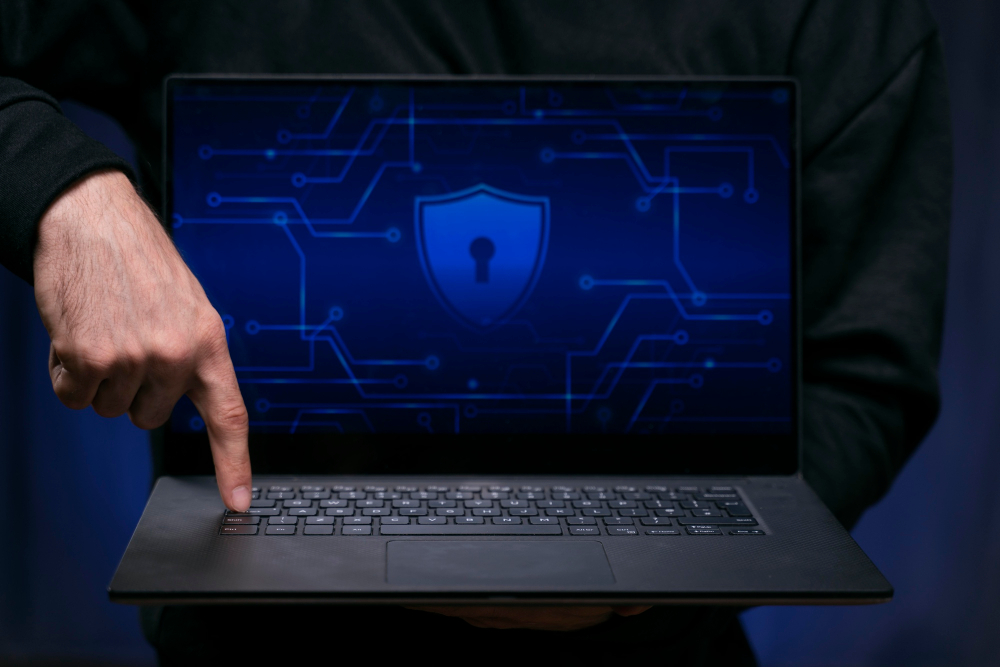The digital age has brought unprecedented convenience, but it also poses new challenges. With cyber threats evolving at an alarming rate, ensuring your PC’s safety is paramount. Cybercriminals employ sophisticated tactics to exploit vulnerabilities, making it crucial to stay one step ahead. This comprehensive guide will help you understand emerging cyber threats and how to protect your PC effectively.
Understanding Emerging Cyber Threats
Emerging cyber threats refer to new or evolving attacks designed to bypass conventional security measures. These include:
- Zero-Day Exploits
Zero-day exploits target software vulnerabilities before developers release patches. These attacks are highly effective and often used to infiltrate systems. - Ransomware
This malicious software encrypts your files, demanding a ransom for their release. New variants are more targeted and challenging to combat. - Advanced Persistent Threats (APTs)
APTs involve prolonged and targeted attacks where hackers infiltrate networks to steal sensitive data over time. - Fileless Malware
Unlike traditional malware, fileless malware operates in your PC’s memory, making it harder to detect and remove. - AI-Powered Attacks
Cybercriminals now leverage artificial intelligence to automate attacks and create more sophisticated phishing campaigns. - IoT-Based Threats
Internet of Things (IoT) devices often have weaker security, making them a gateway for attackers to infiltrate connected PCs.
Steps to Protect Your PC from Emerging Cyber Threats
1. Keep Your Operating System and Software Updated
Hackers exploit outdated software vulnerabilities. Enable automatic updates to ensure your PC always runs the latest versions of operating systems and applications.
2. Use Robust Antivirus and Antimalware Tools
Install reputable antivirus software that offers real-time protection against malware, spyware, and ransomware. Look for features like behavior-based detection to identify new threats.
3. Enable a Firewall
Firewalls act as a barrier between your PC and untrusted networks. Use the built-in firewall in your operating system or install third-party solutions for enhanced security.
4. Practice Safe Browsing Habits
- Avoid clicking on suspicious links or downloading files from untrusted sources.
- Use secure browsers and enable features like anti-phishing protection.
- Bookmark frequently used sites to avoid fraudulent URLs.
5. Implement Strong Passwords
Weak passwords are easy targets for hackers. Use these guidelines for stronger passwords:
- Combine upper and lower-case letters, numbers, and special characters.
- Avoid using common phrases or personal information.
- Use a password manager to store and generate complex passwords.
6. Enable Two-Factor Authentication (2FA)
Add an extra layer of security by enabling 2FA wherever possible. This requires a second verification step, such as a code sent to your mobile device, in addition to your password.
7. Secure Your Network
- Change the default credentials on your Wi-Fi router.
- Use WPA3 encryption for better security.
- Regularly update your router firmware to patch vulnerabilities.
8. Back Up Your Data Regularly
Regular backups ensure that you can recover critical data in case of a ransomware attack or system failure. Use both cloud storage and external drives for redundancy.
9. Be Cautious with Public Wi-Fi
Public Wi-Fi networks are breeding grounds for cyber threats. Avoid accessing sensitive accounts or transmitting personal data on such networks. If necessary, use a virtual private network (VPN) to encrypt your connection.
10. Educate Yourself About Phishing Scams
Phishing scams remain a prevalent method for attackers to steal credentials. Learn to recognize:
- Generic greetings in emails.
- Urgent or threatening language.
- Mismatched URLs in email links.
Advanced Strategies for Cybersecurity
1. Leverage AI-Based Security Tools
AI-driven tools can detect unusual patterns and proactively block threats. Incorporate machine-learning-based solutions for comprehensive protection.
2. Monitor Your System for Suspicious Activity
Use system monitoring tools to detect unauthorized changes, unusual traffic, or attempts to access restricted areas of your PC.
3. Isolate Your Work Environment
Consider using virtual machines (VMs) for high-risk activities. VMs create isolated environments, preventing potential malware from affecting your primary system.
4. Adopt Zero-Trust Security Practices
Zero-trust models operate on the principle of never trusting, always verifying. Implement this by:
- Limiting access to sensitive files.
- Requiring authentication for every access request.
5. Enable Device Encryption
Encryption ensures that even if your device is compromised, the data remains unreadable without the correct decryption key.
Recognizing the Warning Signs of a Compromised PC
Understanding the symptoms of a compromised PC can help mitigate damage. Look out for:
- Unexpected slowdowns or crashes.
- Unusual pop-ups or ads.
- Unauthorized software installations.
- High network activity when idle.
If you suspect an issue, disconnect your PC from the internet immediately and run a full system scan.
What to Do If You’re Attacked
1. Disconnect from the Internet
This prevents further communication between the malware and its source.
2. Run a Comprehensive Scan
Use your antivirus software to perform a deep scan and quarantine infected files.
3. Seek Professional Help
For severe cases like ransomware or APTs, contact cybersecurity professionals to mitigate damage and recover data.
4. Notify Relevant Parties
Inform your financial institutions, email providers, or any affected services to secure accounts and prevent misuse.
Future-Proofing Your PC Security
Emerging threats will continue to evolve, but you can future-proof your security by:
- Staying informed about the latest cyber threats and trends.
- Investing in cybersecurity training for yourself and your family.
- Regularly evaluating and upgrading your security tools and practices.
Conclusion
Cybersecurity is a shared responsibility. By understanding emerging threats and implementing the steps outlined above, you can significantly reduce the risk of your PC falling victim to cyberattacks. Regular vigilance and proactive measures are your best defense in an ever-changing digital landscape.







